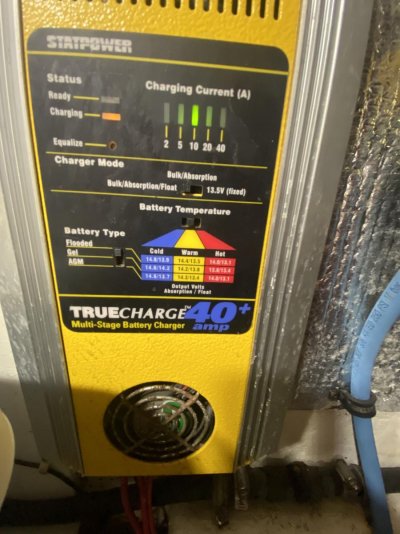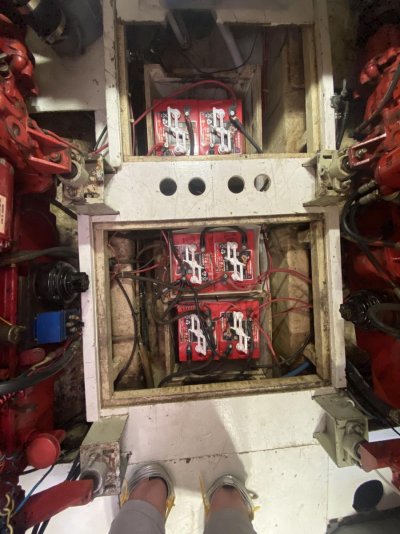socalrider
Guru
- Joined
- Feb 14, 2020
- Messages
- 1,012
- Location
- usa
- Vessel Name
- SEA WOLF
- Vessel Make
- 1979 CHB 41 Trawler
Some things you learn the easy way...
Today I learned that my new-to-me CHB 41 is wired such that the AC breaker labeled "LPG Range" switches off my battery charger. On my way out one day I flipped it off, even though the tanks were manually shut off, just 'cause. Ugh.
I am not 100% sure how long ago this was, at most 10 days. Anyway, I got the the boat today and my bank (4x 6v US Battery 2200's, 3yrs old) was sitting at 10VDC. I'm a little bewildered as to how this could have been drawn down so far but it's possible the charger was off while I had the family on board for a night about a week ago. Still, only lights, almost all of which are LED.
Anyway, I'll figure out if I've got some weird vampire loads - I'm finding lots of questionable wiring decisions. Bigger question is: did I kill the bank? Charger's on now, so I guess we'll see. I'll disconnect and check the float voltages tomorrow, and I have a hydrometer coming in a couple days.
Today I learned that my new-to-me CHB 41 is wired such that the AC breaker labeled "LPG Range" switches off my battery charger. On my way out one day I flipped it off, even though the tanks were manually shut off, just 'cause. Ugh.
I am not 100% sure how long ago this was, at most 10 days. Anyway, I got the the boat today and my bank (4x 6v US Battery 2200's, 3yrs old) was sitting at 10VDC. I'm a little bewildered as to how this could have been drawn down so far but it's possible the charger was off while I had the family on board for a night about a week ago. Still, only lights, almost all of which are LED.
Anyway, I'll figure out if I've got some weird vampire loads - I'm finding lots of questionable wiring decisions. Bigger question is: did I kill the bank? Charger's on now, so I guess we'll see. I'll disconnect and check the float voltages tomorrow, and I have a hydrometer coming in a couple days.


